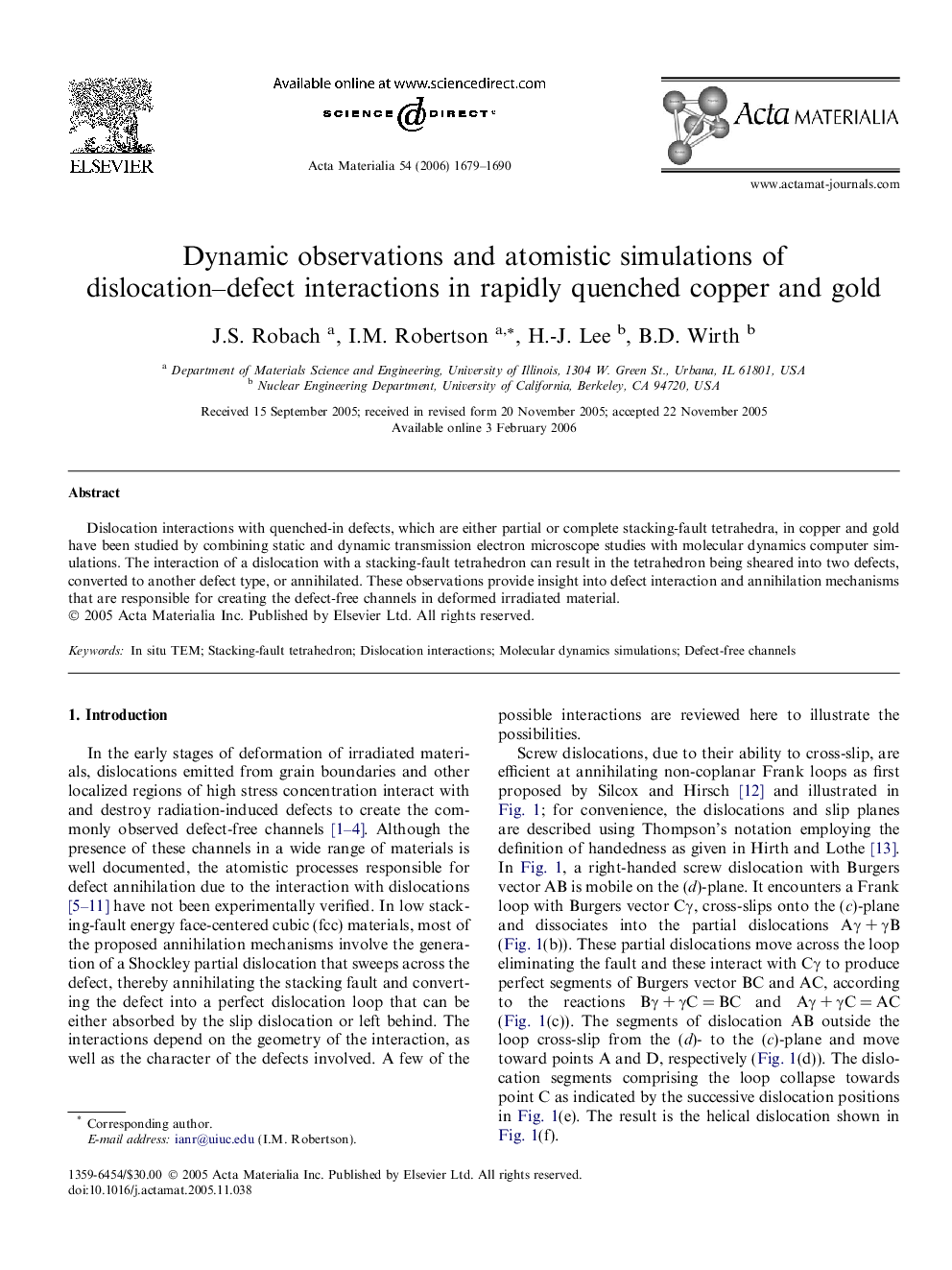| Article ID | Journal | Published Year | Pages | File Type |
|---|---|---|---|---|
| 1450750 | Acta Materialia | 2006 | 12 Pages |
Abstract
Dislocation interactions with quenched-in defects, which are either partial or complete stacking-fault tetrahedra, in copper and gold have been studied by combining static and dynamic transmission electron microscope studies with molecular dynamics computer simulations. The interaction of a dislocation with a stacking-fault tetrahedron can result in the tetrahedron being sheared into two defects, converted to another defect type, or annihilated. These observations provide insight into defect interaction and annihilation mechanisms that are responsible for creating the defect-free channels in deformed irradiated material.
Related Topics
Physical Sciences and Engineering
Materials Science
Ceramics and Composites
Authors
J.S. Robach, I.M. Robertson, H.-J. Lee, B.D. Wirth,
